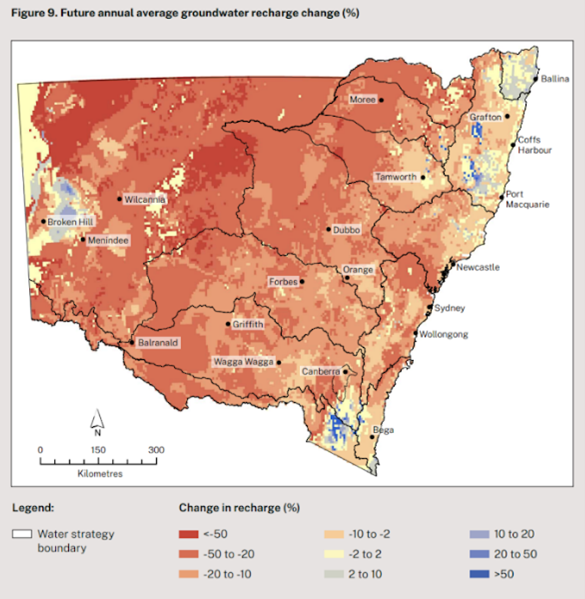Groundbreaking water plans released for comment
Laura Williams
21 July 2022, 2:54 AM
 Furrow irrigation of cotton in Warren. (Image via DPIE)
Furrow irrigation of cotton in Warren. (Image via DPIE)Local water supplies hang in the balance of the recently released draft NSW Groundwater Strategy, and with water recharge levels only expected to decrease into the future, stakeholders and community members are encouraged to take a look at what is included.
The state’s first long-term roadmap for the sustainable management of groundwater resources hopes to hit an ambitious combination of targets; accounting for environment, economy and culture amongst other factors, and juggle conflicting needs and aspirations.
NSW Department of Planning and Environment (DPIE) Executive Director Kaia Hidge said the strategy will ensure communities have groundwater resources into the long-term future.
“More than 250 regional towns across our state rely on groundwater for their day-to-day water needs,” Ms Hodge said.
With local droughts recent in everyone’s memory, trucked-in water for towns with inadequate groundwater supply was an unsustainable solution, and one that saw the state government considering evacuating as many as 90 towns who were in short supply.
Some local stakeholders are concerned, however, that the strategy doesn’t take into account all bases, and will see more long term damage.
Inland Rivers spokesperson Brian Stevens said that the mystery around groundwater will likely make the policy redundant, and perhaps harmful.
“Almost none of the NSW Government strategies address our concerns that the surface water was over allocated. The groundwater is allocated in a lot of places and we don’t know enough about it,” Mr Stevens said.
“That’s what they do. They keep releasing strategies without enough information…to release more and more licences, you really should have some proper information to know what’s going on,” he said.
In 2019, groundwater supplies left towns like Cobar, Nyngan and Narromine vulnerable to loss of water supply, making groundwater management and accessibility more important than ever.
“This is a vital resource that we need to manage sustainably and protect, especially as we face challenges like a more variable climate, and more pressure on our resources as our towns and cities continue to grow, particularly off the back of the pandemic,” Ms Hodge said.
The report notes, however, that population projections in Western NSW are more conservative than those closer to the NSW coastline.
Yet with local areas relying on the source, with 70% of extraction occurring across the Lachlan, Namoi and Murrumbidgee regions, assurance for those in less populated areas is still critical.
According to the strategy, a suite of different measures will be delivered to different areas, via 12 regional strategies to address diverse challenges.
The new strategy is also set to bolster Aboriginal people’s rights to access and use groundwater, and for the first time culturally significant and valuable sites that are groundwater-dependent will be recognised and protected.
“Our state has more than 450 groundwater sources from which more than 3,000 billion litres of water could be extracted for use every year – including for cultural use, critical needs, and town water supply. That’s 1.2 million Olympic-sized swimming pools worth of water,” Ms Hodge said.
In areas like the Western Plains where recharge is slow and only expected to decline, an informed response will be crucial to future water security.
In some places, that decrease of recharge could be up to 50 per cent.
“Some of the water is fossil well water that has been sitting there for ages and doesn’t get recharged. If you get into that you’re pretty much mining the water,” Mr Stevens said.

According to NSW Government information, Western NSW will fall well behind the state in groundwater recharge in future. (Source: NSW Groundwater Strategy)
The NSW Government does intend to conduct more research as part of their strategy.
“We must act now to future-proof these precious resources, and I urge all members of the community and stakeholders to have their say to help us finalise the strategy.”
The draft NSW Groundwater Strategy will be on display from 5 July to 14 August. As part of the exhibition process two online webinars will be held during July.




